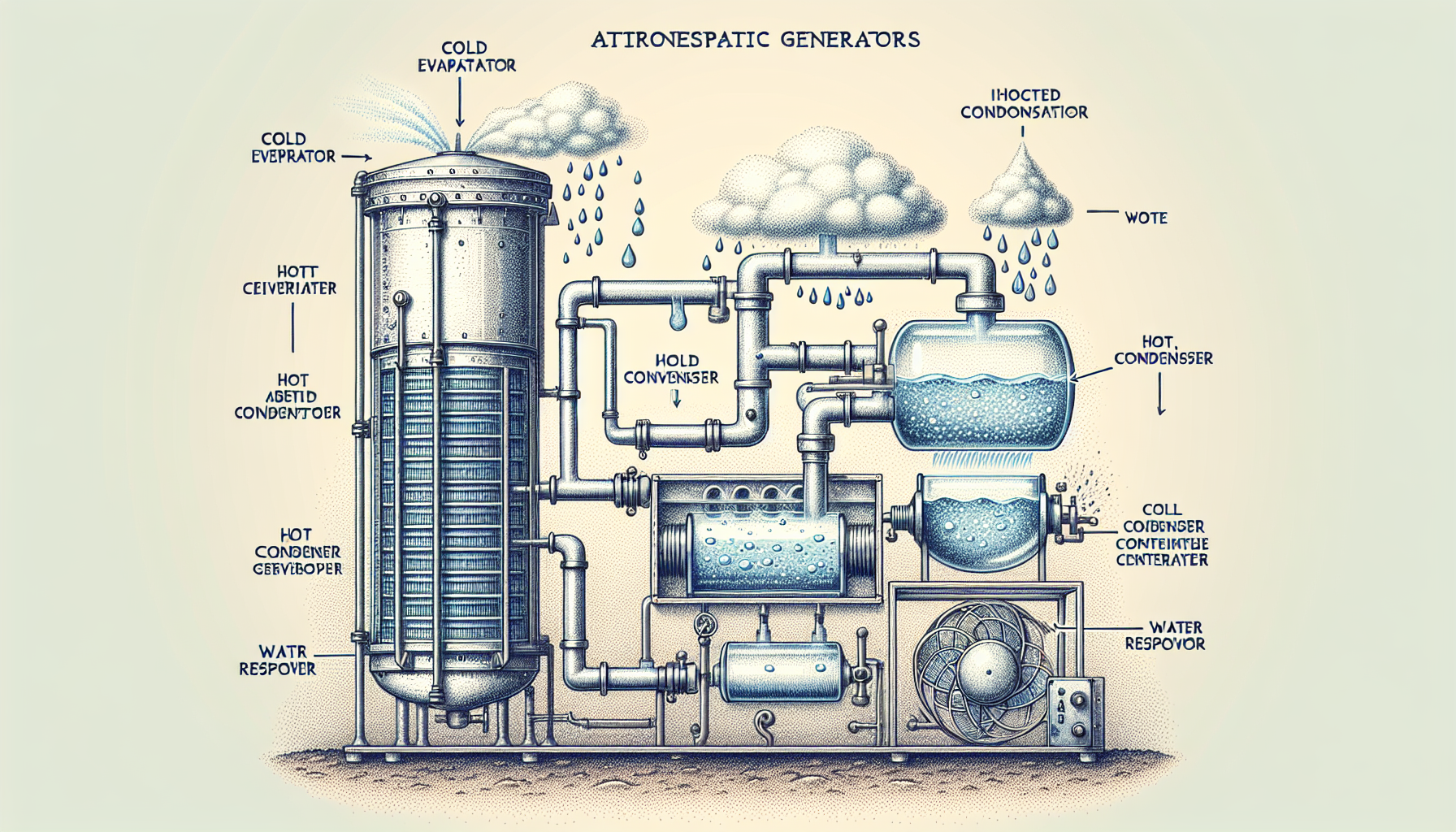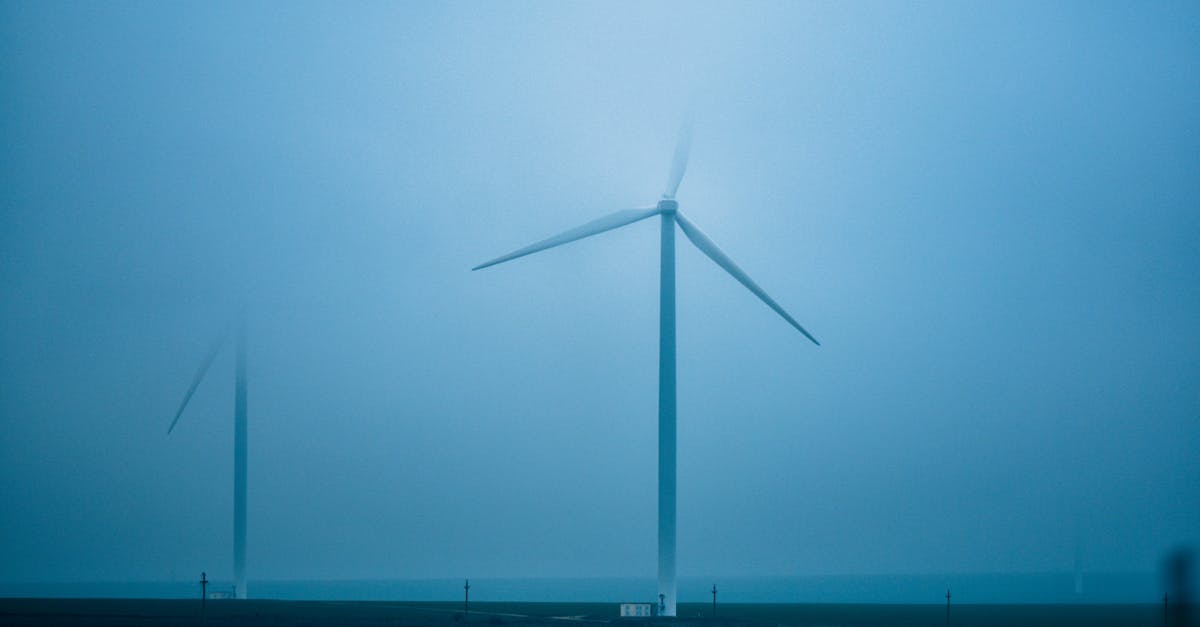Unveiling the Secrets of Water Creation: Exploring Atmospheric Water Generators

In the face of escalating water scarcity, Atmospheric Water Generators (AWGs) have emerged as a promising solution to harness the invisible abundance of humidity in the air around us. These ingenious devices mimic nature’s water cycle, condensing moisture from the atmosphere to generate clean, potable water. Join us on a journey into the fascinating world of AWGs, exploring their inner workings, understanding their capabilities, and discovering their diverse applications in both everyday and crisis situations.
From understanding the principles of water condensation to delving into the components of an AWG system, we’ll lay the foundation for comprehending how these technologies produce water from thin air. We’ll then delve into the factors that influence their production capacity, including humidity levels, temperature, and generator size, providing insights into how these variables affect water yield. Along the way, we’ll uncover the limitations of AWGs, ensuring realistic expectations for users, and highlight the importance of maintenance and energy consumption considerations.
Thank you for reading this post, don't forget to subscribe!
As we progress, we’ll explore the practical applications of AWGs, identifying scenarios where they excel as a reliable water source. Whether it’s providing clean water in arid regions or supporting off-grid living, we’ll showcase the versatility of these devices in addressing water scarcity challenges. We’ll also delve into their potential for indoor humidity control and their role in industrial processes and disaster relief, demonstrating the diverse applications of AWGs in our world.
1. Understanding Atmospheric Water Generators
At the heart of an Atmospheric Water Generator (AWG) lies a simple yet ingenious principle: harnessing the humidity in the air to create pure, drinkable water. These devices mimic nature’s water cycle, replicating the processes that lead to rainfall and dew formation.
Inside an AWG, a fan draws in humid air, which then passes through a condenser. This condenser is cooled to a temperature below the dew point of the air, causing the water vapor to condense into liquid water. The condensed water is then collected and purified, resulting in clean, potable water.
The key components of an AWG include the evaporator, condenser, and control system. The evaporator absorbs heat from the incoming air, causing the water vapor to evaporate. The condenser, as mentioned earlier, cools the air, leading to condensation. The control system monitors the temperature and humidity levels, optimizing the AWG’s performance and ensuring efficient water production.
The Science Behind Water Condensation
Condensation, the process that turns water vapor into liquid water, is the fundamental principle behind the operation of Atmospheric Water Generators (AWGs). Understanding the science of condensation is key to comprehending how AWGs effectively extract water from the air.
Condensation occurs when warm, moisture-laden air comes into contact with a cooler surface. This causes the water vapor in the air to condense into tiny droplets of liquid water. The temperature at which condensation occurs is called the dew point. When the dew point is reached, the air can no longer hold all of the water vapor, and condensation begins.
AWGs replicate this natural process by creating a controlled environment inside the machine. A fan draws in humid air, which is then passed over a cold surface, causing the water vapor to condense into liquid water. This condensed water is then collected and purified, resulting in clean, potable water.
Components of an AWG System
An Atmospheric Water Generator (AWG) is a complex system that relies on several key components to produce water from the air. Understanding the roles of these components is essential to comprehending how AWGs function:
- Evaporator: The evaporator is the component that absorbs heat from the incoming air, causing the water vapor to evaporate. It consists of a series of coils or plates that are heated, increasing the temperature of the air and allowing it to hold more moisture.
- Condenser: The condenser is the component that cools the air, causing the water vapor to condense into liquid water. It consists of a series of cold coils or plates that are cooled by a refrigerant, lowering the temperature of the air and causing the water vapor to condense.
- Control System: The control system is the component that monitors the temperature and humidity levels inside the AWG and adjusts the operation of the evaporator and condenser accordingly. It ensures that the AWG operates at optimal efficiency and produces a consistent supply of water.
These three components work together to create a controlled environment inside the AWG, allowing it to extract water from the air effectively.
2. Water Production Capacity of AWGs
The amount of water an Atmospheric Water Generator (AWG) can produce depends on several key factors, including humidity levels, temperature, and generator size:
- Humidity Levels: Humidity refers to the amount of water vapor present in the air. The higher the humidity, the more water an AWG can produce. AWGs are most effective in humid environments, such as coastal areas or during humid seasons.
- Temperature: Temperature also plays a role in water production. Warmer air can hold more moisture than colder air. AWGs operate most efficiently in warm, humid climates. However, some AWGs are designed to operate in colder climates by using additional components to preheat the incoming air.
- Generator Size: AWGs come in a range of sizes, from small units designed for personal use to large-scale units capable of producing thousands of gallons of water per day. The size of the AWG will determine its water production capacity.
By understanding these factors, you can choose the right AWG for your specific needs and ensure that you have a reliable source of clean water, even in remote or arid environments.
Humidity: The Essential Ingredient
Humidity is the key ingredient for Atmospheric Water Generators (AWGs) to produce water. The amount of water an AWG can produce is directly proportional to the humidity levels in the air. Simply put, the more humid the air, the more water an AWG can generate.
The correlation between humidity and AWG efficiency is evident in real-world examples. In humid coastal areas, AWGs can produce significant amounts of water even with relatively small units. For instance, a small AWG operating in a humid climate can produce up to 5 gallons of water per day. In contrast, the same AWG operating in a dry desert climate would produce significantly less water due to the lower humidity levels.
Understanding the relationship between humidity and AWG efficiency is crucial for choosing the right AWG for your specific needs. If you live in a humid climate, a smaller, less expensive AWG may be sufficient. However, if you live in a dry climate, you may need a larger, more powerful AWG to meet your water needs.
Temperature’s Impact on Water Production
Temperature plays a significant role in water production for Atmospheric Water Generators (AWGs). Warmer air can hold more moisture than colder air. This means that AWGs tend to produce more water in warmer climates or during warmer seasons.
The relationship between temperature and water yield is explained by the physical properties of air. As air temperature increases, its ability to hold water vapor increases. This is because warmer air molecules have more energy and can move around more freely, allowing them to hold onto more water vapor.
In practical terms, this means that AWGs operating in warm, humid climates will produce more water than AWGs operating in cold, dry climates. For example, an AWG operating in a warm, humid climate with a temperature of 80°F and a relative humidity of 70% could produce up to 10 gallons of water per day. In contrast, the same AWG operating in a cold, dry climate with a temperature of 40°F and a relative humidity of 30% would produce significantly less water.
Generator Size and Its Role
Atmospheric Water Generators (AWGs) come in a wide range of sizes, from small, portable units designed for personal use to large-scale industrial units capable of producing thousands of gallons of water per day.
The size of the AWG you choose will depend on your specific water needs and budget. Small AWGs are ideal for individuals or small families looking for a supplemental source of water. These units can typically produce up to 5 gallons of water per day and are relatively affordable.
Medium-sized AWGs are suitable for larger families or small businesses. These units can produce up to 20 gallons of water per day and are more expensive than small AWGs. Large-scale AWGs are designed for commercial and industrial applications and can produce hundreds or even thousands of gallons of water per day. These units are the most expensive but can provide a reliable source of water for large populations.
When choosing an AWG, it’s important to consider your daily water needs and the climate you live in. If you live in a humid climate, a smaller AWG may be sufficient. However, if you live in a dry climate, you may need a larger AWG to meet your water needs.
3. Limitations of Atmospheric Water Generators
Atmospheric Water Generators (AWGs) have certain limitations and challenges that users should be aware of before purchasing and using these devices:
- Energy Consumption: AWGs require electricity to operate, and the amount of energy consumed will vary depending on the size and efficiency of the unit. While some AWGs are designed to be energy-efficient, they can still add to your monthly energy bill, especially if you live in a climate where the humidity levels are low.
- Maintenance and Upkeep: AWGs require regular maintenance and cleaning to ensure optimal performance. This includes cleaning the filters, coils, and other components. If the AWG is not properly maintained, it can lead to decreased water production and efficiency.
- Environmental Factors: AWGs are sensitive to environmental factors such as dust, pollution, and extreme temperatures. Dust and pollution can clog the filters and coils, reducing the AWG’s ability to produce water. Extreme temperatures can also affect the performance of the AWG, especially if the unit is not designed to operate in such conditions.
It’s important to have realistic expectations about the capabilities and limitations of AWGs before purchasing one. These devices can be a valuable source of water in certain situations, but they are not a replacement for traditional water sources such as wells or municipal water supplies.
Energy Consumption Considerations
The power requirements of Atmospheric Water Generators (AWGs) vary depending on the size and efficiency of the unit. Small AWGs designed for personal use typically consume less than 1 kilowatt-hour (kWh) of electricity per day. However, larger AWGs designed for commercial or industrial use can consume significantly more energy.
If you are considering purchasing an AWG, it is important to factor in the energy consumption costs. The cost of electricity will vary depending on your location and energy provider. However, as a general rule of thumb, you can expect to pay around $0.10 to $0.20 per kWh of electricity consumed.
To reduce the energy consumption of your AWG, look for models that are Energy Star certified. Energy Star is a government-backed program that helps consumers identify energy-efficient products. Energy Star certified AWGs will typically consume less energy than non-certified models. You can also reduce the energy consumption of your AWG by using it in conjunction with other water-saving measures, such as rainwater harvesting or greywater reuse.
Maintenance and Upkeep
Regular maintenance and cleaning are essential to ensure optimal performance and longevity of your Atmospheric Water Generator (AWG). Here are some key maintenance tasks that you should perform on a regular basis:
- Cleaning the Filters: The filters in your AWG are responsible for removing dust and other particles from the air. Over time, these filters can become clogged, which can reduce the AWG’s ability to produce water. It is important to clean the filters regularly, according to the manufacturer’s instructions.
- Cleaning the Coils: The coils in your AWG are responsible for cooling the air and condensing the water vapor. Over time, these coils can become coated with mineral deposits and other contaminants. It is important to clean the coils regularly, according to the manufacturer’s instructions.
- Checking the Water Reservoir: The water reservoir in your AWG stores the water that is produced by the unit. It is important to check the water reservoir regularly and empty it when it is full. If the water reservoir is not emptied regularly, it can lead to the growth of bacteria and mold.
By following these simple maintenance tips, you can help ensure that your AWG operates at peak performance for many years to come.
Environmental Factors
Environmental factors can have a significant impact on the operation of Atmospheric Water Generators (AWGs). Here are some of the most common environmental factors that can affect AWGs:
- Dust and Pollution: Dust and pollution can clog the filters in your AWG, reducing the unit’s ability to produce water. If you live in an area with high levels of dust or pollution, you may need to clean the filters more frequently.
- Extreme Temperatures: AWGs are designed to operate within a certain temperature range. If the temperature is too high or too low, the AWG may not be able to produce water efficiently. If you live in an area with extreme temperatures, you may need to take steps to protect your AWG from the elements.
- Humidity: The humidity level of the air can also affect the performance of your AWG. AWGs are most efficient in humid environments. If you live in a dry climate, you may need to use a humidifier to increase the humidity level in your home or office.
By understanding how environmental factors can affect your AWG, you can take steps to minimize their impact and ensure that your unit operates at peak performance.
4. Applications and Best Uses for AWGs
Atmospheric Water Generators (AWGs) have a wide range of practical applications, including:
- Water Scarce Regions: AWGs can provide a reliable source of clean water in regions where traditional water sources are scarce. AWGs are particularly well-suited for use in remote areas, disaster zones, and developing countries.
- Off-Grid Living: AWGs can provide a supplemental source of water for individuals and families living off the grid. AWGs can be used to produce water for drinking, cooking, and bathing.
- Indoor Humidity Control: AWGs can be used to control the humidity level in homes and offices. By removing moisture from the air, AWGs can help to reduce the risk of mold and mildew growth.
- Emergency Situations: AWGs can be used to provide a source of clean water in emergency situations, such as natural disasters and power outages.
Water Scarce Regions and Emergency Situations
Atmospheric Water Generators (AWGs) are a valuable source of water in arid regions and during emergencies. In arid regions, AWGs can provide a reliable source of clean water for drinking, cooking, and bathing. AWGs are also well-suited for use in disaster zones, where traditional water sources may be contaminated or destroyed.
One of the main advantages of AWGs is that they can produce water from the air, even in the driest climates. This makes AWGs an ideal solution for communities that do not have access to traditional water sources. AWGs are also relatively easy to operate and maintain, making them a good option for remote communities and disaster zones.
In addition to providing a source of clean water, AWGs can also help to improve the quality of life in arid regions and disaster zones. By removing moisture from the air, AWGs can help to reduce the risk of respiratory problems and other health issues. AWGs can also be used to create a more comfortable living environment by providing a source of cool, humid air.
Off-Grid Living and Remote Locations
Atmospheric Water Generators (AWGs) are a valuable source of water for individuals living off the grid. AWGs can provide a primary or supplemental source of water for drinking, cooking, and bathing. AWGs are particularly well-suited for use in remote locations, where access to traditional water sources may be limited or non-existent.
One of the main advantages of AWGs is that they can produce water from the air, regardless of the climate or location. This makes AWGs an ideal solution for individuals living in remote areas, such as mountains, deserts, and islands. AWGs are also relatively easy to operate and maintain, making them a good option for individuals who are not familiar with complex water treatment systems.
In addition to providing a source of clean water, AWGs can also help to improve the quality of life for individuals living off the grid. By removing moisture from the air, AWGs can help to reduce the risk of respiratory problems and other health issues. AWGs can also be used to create a more comfortable living environment by providing a source of cool, humid air.
Indoor Humidity Control
Atmospheric Water Generators (AWGs) have the potential to improve indoor air quality and comfort by managing humidity levels. High humidity levels can lead to a number of problems, including mold and mildew growth, respiratory problems, and discomfort. AWGs can help to reduce humidity levels by removing moisture from the air.
One of the main advantages of using AWGs for indoor humidity control is that they are a relatively low-maintenance solution. AWGs do not require any special filters or chemicals, and they can be easily cleaned and maintained. AWGs are also relatively quiet, making them a good option for use in homes and offices.
In addition to improving indoor air quality, AWGs can also help to improve comfort levels. By removing moisture from the air, AWGs can help to create a more comfortable and refreshing indoor environment. AWGs can also be used to reduce the risk of static electricity and other problems that can be caused by high humidity levels.
Additional Applications
In addition to the primary applications discussed above, AWGs also have a number of niche applications, including water recovery in industrial processes and disaster relief.
In industrial processes, AWGs can be used to recover water from the air that is released as a byproduct of manufacturing. This water can then be reused in the manufacturing process, reducing the need for fresh water and helping to conserve water resources.
AWGs can also be used to provide a source of clean water in disaster relief situations. In the aftermath of a natural disaster, traditional water sources may be contaminated or destroyed. AWGs can be used to produce clean water from the air, providing a vital resource for survivors.
AWGs are a versatile technology with a wide range of potential applications. As the technology continues to develop, AWGs are likely to become increasingly common in a variety of settings.
How much water can an AWG produce per day?
The amount of water an AWG can produce per day depends on a number of factors, including the size of the AWG, the humidity level of the air, and the temperature. However, as a general rule of thumb, a small AWG can produce up to 5 gallons of water per day, while a large AWG can produce up to 100 gallons of water per day.
How much does an AWG cost?
The cost of an AWG can vary depending on the size and features of the unit. However, as a general rule of thumb, you can expect to pay between $500 and $5,000 for an AWG.
How long does an AWG last?
The lifespan of an AWG depends on a number of factors, including the quality of the unit, the maintenance it receives, and the environment in which it is used. However, as a general rule of thumb, you can expect an AWG to last for 5 to 10 years.
Can AWGs be used in all climates?
AWGs can be used in all climates, but they are most efficient in humid climates. In dry climates, AWGs may need to be supplemented with a humidifier to increase the humidity level of the air.
Are AWGs noisy?
AWGs can produce some noise, but it is typically not loud enough to be disruptive. The noise level will vary depending on the size and features of the unit.




